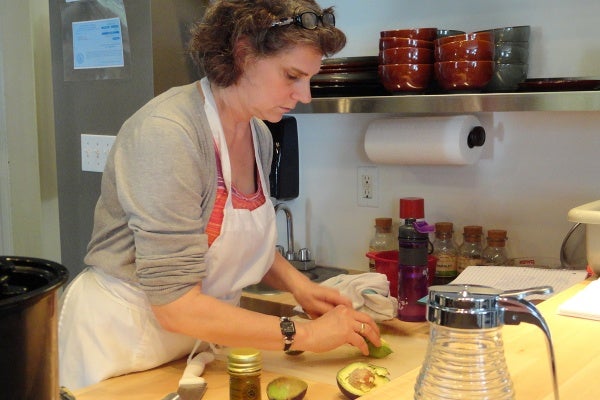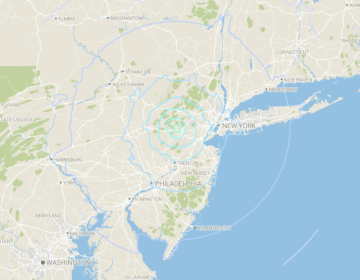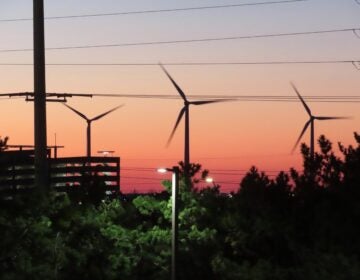Princeton exhibit features Jersey Shore paintings from 1871-1940
This is part of a series from Ilene Dube of The Artful Blogger.
I must go down to the seas again, to the lonely sea and the sky, and all I ask is a newly completed boardwalk and a sand dune near where I might lie.
The wrath of Hurricane Sandy made even the least likely beachgoers among us aware of the precious resource our Jersey Shore is. And at least some beach towns are expecting 2013 to be a banner year.
But before packing the beach umbrella, sunblock and UVP hat, you might want to check out Coastal Impressions: Painters of the Jersey Shore, 1871-1940 at Morven Museum & Garden in Princeton. Looking at painterly strokes of fishermen in their boats enduring stormy seas, lobstermen hauling in traps, clammers digging in to the rippled waters, and billowing sails making their way through churning surf is one way to experience the beach without mosquitoes, sticky sand and ointment slathered on your skin. There are nearly 70 paintings, as well as photos, news clippings, and ephemera describing the era and the region.
The Jersey Shore was home to artist colonies whose output rivaled that of the better-known colonies of Old Lyme and Cos Cob, Connecticut, and Bucks County, Pennsylvania, according to Jersey Shore Impressionism scholar Roy Pedersen, from whose collection the exhibition is largely drawn. (There are also loans from the Hunter Museum of Art, the Phoenix Museum of Art, and Saint-Gaudins National Historic Site, as well as private collections.),Between 1880 and 1940, these artists lived in shore communities and produced works that contribute to the cultural heritage of New Jersey.
According to Pedersen, the greatest painting in 19th and 20th century America took place not in cities, but in rural areas. “When the National Academy of Design rediscovered the Cos Cob School in Connecticut, one of the most celebrated was of a water scene. But it was actually painted in New Jersey.” Pedersen knew the painting’s true origin because he grew up on the Jersey Shore. Theodore Robinson’s “Boats at a Landing,” painted in 1894, is in Brick where Pedersen goes to this day to walk his German Shepherd.
Artists flocked to the Manasquan River area In the late 19th century. Walt Whitman, who had struck up a friendship with Point Pleasant artist Carolyn Cook Sanborn and her husband, Nestor, visited the shore and wrote his poem “Patrolling Barnegat.”
“Whitman said what gives New Jersey its identity is the Shore,” noted Pedersen.
Winslow Homer painted what may have been the first American Impressionist painting, “Long Branch.” Robert Louis Stevenson spent a month with his artist friends on the Manasquan in 1888, before setting off for the South Seas. Referring to how Stevenson spent that summer, a writer first described it as an art colony.
“The quality of light where the beach and the shore meet has been a natural subject for painters,” said Pedersen, author of The Fascination of Sun and Shore: Painters of the Jersey Shore (Down the Shore Publishing, 2013). “In the 1880s and 1890s, Impressionists like Gaugin and Van Gogh weren’t in Paris, they were in Brittany and Normandy and other seaside rural communities. That is the context that New Jersey can be seen in — what Brittany and Normandy are to Paris, New Jersey is to New York and Philadelphia, a great place to take advantage of the quality of light.”
These painters settling at the Jersey Shore had the best training from the best teachers in Europe and America. “They were sophisticated artists who believed impressionist art could be made and would flourish,” said Pedersen. “They were Bohemian, not the carriage set of Long Branch and Spring Lake. They sought a simpler, rural life among fishermen and sophisticated artists with whom they could have friendships.” Hugh Campbell (1905-1997), for example, was a self-taught artist who lived in an unheated shack used for housing canoes on Rancocas Creek. “He practiced yoga and Buddhism and lived an ascetic life and produced a wonderful body of painting,” said Pedersen. “He was a great eccentric who never strived for wealth, fame or traditional success. He published a book of poetry, ‘Knock Vigorously to Be Heard: Reflections of a Yoga-Trained Artist’ in 1966.'”
Pedersen is credited with discovering the New Hope Modernists who had long been overshadowed by the Bucks County Impressionists. That culminated in a 1994 exhibition at the Michener Art Museum in Doylestown, Pa. “But no one was interested in Jersey artists.
“People think of impressionist art being made long ago, far away – the conventional wisdom is that regional art is second rate,” Pedersen continued. “But nothing is more transformational on the citizens of a region as its art. It changes the way you see and think because it is the landscape you know and you feel a connection to the artist and subject – that’s as powerful an experience as you can get looking at art. No one went to the Jersey Shore to be forgotten – the artists felt the subject matter and qualities made it worthwhile to paint.”
Coastal Impressions: Painters of the Jersey Shore, 1871-1940 is on view at Morven Museum & Garden, 55 Stockton St., Princeton, through September 8, 2013.
_____________________________________________________
The Artful Blogger is written by Ilene Dube and offers a look inside the art world of the greater Princeton area. Ilene Dube is an award-winning arts writer and editor, as well as an artist, curator and activist for the arts.
WHYY is your source for fact-based, in-depth journalism and information. As a nonprofit organization, we rely on financial support from readers like you. Please give today.











